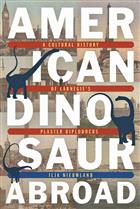American Dinosaur Abroad: A Cultural History of Carnegie's Plaster Diplodocus
- Publisher : University of Pittsburgh Press
- Illustrations : 56 b/w photos + illus
Our customers have not yet submitted a review for this title - click here to be the first to write a review
Description:
In early July 1899, an excavation team of paleontologists sponsored by Andrew Carnegie discovered the fossil remains in Wyoming of what was then the longest and largest dinosaur on record. Named after its benefactor, the Diplodocus carnegii-or Dippy, as it's known today-was shipped to Pittsburgh and later mounted and unveiled at the Carnegie Museum of Natural History in 1907. Carnegie's pursuit of dinosaurs in the American West and the ensuing dinomania of the late nineteenth century coincided with his broader political ambitions to establish a lasting world peace and avoid further international conflict. An ardent philanthropist and patriot, Carnegie gifted his first plaster cast of Dippy to the British Museum at the behest of King Edward VII in 1902, an impulsive diplomatic gesture that would result in the donation of at least seven reproductions to museums across Europe and Latin America over the next decade, in England, Germany, France, Austria, Italy, Russia, Argentina, and Spain. In this largely untold history, Ilja Nieuwland explores the influence of Andrew Carnegie's prized skeleton on European culture through the dissemination, reception, and agency of his plaster casts, revealing much about the social, political, cultural, and scientific context of the early twentieth century.
You may also like...
Studies on Fossils in Amber, with Particular Reference to the Cretaceous of New
Grimaldi, D. (Ed.)
Price £125.00
Cetothere Skeletons from the Miocene Choptank Formation of Maryland and Virginia
Kellogg, R.
Price £10.00









